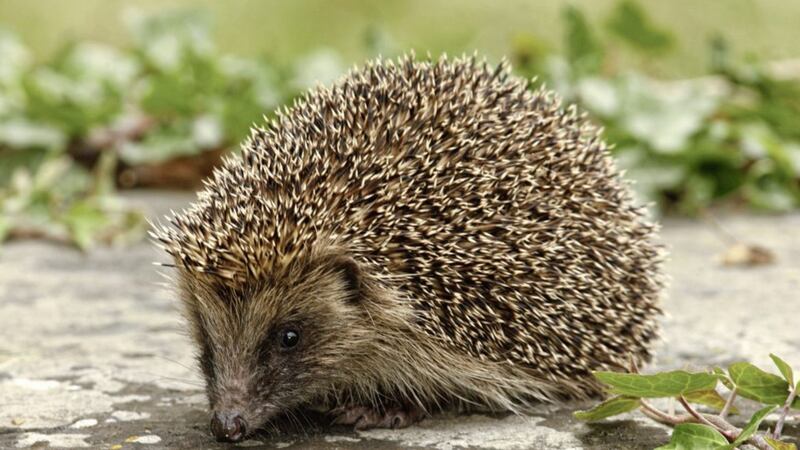EARLIER this month a survey by BBC Gardeners' World found that almost half of people have never seen a hedgehog in their garden. We can safely assume that the overwhelming majority of the survey’s respondents live in Britain but there’s nothing to suggest that Irish hedgehogs are any more common than their counterparts on the other side of the Irish Sea.
Just 29 per cent of people taking part in the magazine’s annual wildlife survey had seen a hedgehog in their garden in the last year, down from 32 per cent the previous year. Only one in 10 (11 per cent) of the 2,348 of the people who took part said they saw the hedgehog regularly in their gardens while 48 per cent had never seen one.
The figures reflect a continued decline in the hedgehog populations of both Britain and Ireland. In the former, the population has dropped by 30 per cent since 2003 to less than a million – down from an estimated population of 36 million in the 1950s. This is bad news for gardeners, because hedgehogs are among the best pest controls, as their diet includes slugs, snails and mice.
Thankfully, the survey suggests people are keen to save the species, immortalised by Beatrix Potter as Mrs Tiggy-Winkle with seven out of 10 survey respondents saying they would be happy to cut a hole in their garden fences to allow hedgehogs to roam more freely to help halt their demise.
Lucy Hall, BBC Gardener's World editor, said: "The much-loved, humble hog is among gardeners' most appealing natural allies, but they're disappearing on our watch.
"And yet a few simple steps, from leaving out the right food, to opening up gaps in fences and creating secluded areas for nesting and hibernation, will help make our gardens the havens that hedgehogs have long enjoyed.
"If we act collectively now, we can still help save the species for future generations, but time is running out."
Much of the hedgehog’s decline can be blamed on habitat loss, especially the removal of hedgerows over recent decades. Another key factor is the use of chemical crop controls in agriculture and by less-enlightened gardeners. These chemicals can poison hedgehogs and at best kill the creatures they feed on.
So apart from curtailing chemical use, what else can we gardeners do to create a hedgehog-friendly habitat? Arguably, the most important piece of advice is to not be overly tidy, especially during the hedgehog’s hibernation time, which stretches from November through to March. During this period they may wake up a number of times and will often build a fresh nest with leaves or seek out a wood pile – anywhere that offers good cover and shelter.
Let areas of your garden go wild, with long grass, nettles, log and leaf piles and some undergrowth to provide foraging opportunities and nesting sites. Or why not build a ‘hedgehog hotel’ – a simple wooden box with entrance holes and a watertight lid? Be cautious using strimmers when cutting back thick vegetation, as these are the very places hedgehogs lie up during the day.
Leaving food out is the simplest way of helping out your local hedgehog population. They find dog or cat food palatable while bread and milk is unsuitable. Hedgehogs are one of the few animals that eat banana so if you leave this out and it disappears, you can be fairly certain that you have a hedgehog.
And don’t forget to cut a hole in your garden fence to allow hedgehogs to roam more freely.








